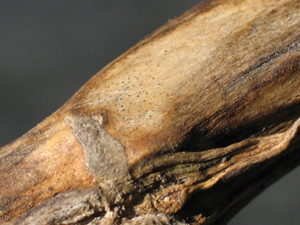
Features
Agronomy
Fertility and Nutrients
ESN urea fertilizer fits winter wheat in the fall
New slow release, polymer-coated urea fertilizer, ESN (Environmentally Smart Nitrogen)
April 9, 2008 By Bruce Barker
New slow release, polymer-coated urea fertilizer, ESN (Environmentally Smart Nitrogen) was registered for use in Canada in July 2006, for both food and non-food crops. For winter wheat growers, the technology has several advantages.
By slowing down the release of nitrogen (N), significantly higher N rates can be safely seed-placed with a polymer-coated urea. Another benefit of ESN is the potential for reduced N losses resulting in higher N use efficiency by crops. This could lead to higher yield and higher protein levels with their associated premium payments. But Alberta Agriculture and Food (AAF) research shows that ESN coated urea is not a good candidate for spring broadcast applications.
Ross McKenzie with AAF and Lethbridge College at Lethbridge, Alberta recently completed two field experiments conducted during three years at three locations in southern Alberta to evaluate different options of applying ESN to winter wheat. “ESN has a fit with winter cereal fertilization, but uncoated urea is a better fertilizer in some circumstances,” says McKenzie.
In the first experiment, three N fertilizers (20 day ESN, 40 day ESN and urea) were seed-placed and side-banded at the time of seeding at zero, 27, 53, 80 and 107 pounds per acre (zero, 30, 60, 90 and 120 kilograms N per hectare). The two types of ESN urea used in the study were prototypes, but the results are typical of the commercial ESN product now available.
As expected, stand densities of winter wheat were substantially reduced by seedrow application of urea in a narrow seedrow at rates greater than 27 pounds per acre. However, stand establishment was not affected by seedrow application of ESN, even at the highest rate of N application of 107 pounds per acre – a rate that is well above the normal fertilizer rate for winter wheat growers in southern Alberta. When N fertilizer was side-banded, stand densities were also unaffected by fertilizer type or N rate.
Again, as expected, yield was reduced due to N application when high rates of seed-placed urea were used. Conversely, yield increased with increasing N fertilizers for both the side-band and ESN treatments. Grain protein concentration and N uptake were also similar for ESN and seed-placed urea.
 |
| Ross McKenzie’s research shows that ESN coated urea fertilizer is not a good option for spring broadcast N fertilizer because it releases too slowly. Photo By Bruce Barker. |
In McKenzie’s second experiment, fertilizer N was split into a fall and spring application. Plots were sown in the fall with zero, 27 or 53 pounds N per acre ESN urea at the time of seeding. Subsequently, ESN, urea and ammonium nitrate were broadcast at 27 pounds per acre in the early spring on these plots. In this experiment, the spring broadcast ESN urea was not as effective in increasing yield or maintaining adequate levels of seed protein as broadcast ammonium nitrate or urea.
“If you’re going to fertilize winter wheat in the spring, urea can be very effective in southern Alberta if applied in mid April when soil and air temperatures are cool,” explains McKenzie. “ESN does not perform very well on winter wheat in the early spring because it has too slow of a release rate when broadcast on to the soil surface, and doesn’t get a chance to move into the soil when the crop needs it the most. It just sits there on the soil surface.”
Be cautious with granule bashing
These research studies point towards several possibilities for winter wheat fertilization. For growers who want to put all their fertilizer down in the fall in a single shoot system, ESN coated urea provides that opportunity. For single shooters, McKenzie says the research indicates that growers can place three to four times more ESN with the seed. “I would be cautious going more than 50 to 80 pounds with a narrow opener.”
McKenzie is concerned though, about the amount of granule bashing in commercial seeding equipment. His equipment uses a plot seeder so the granules are not subjected to harsh handling which could cause breakage. In air-seeder equipment, he has seen 30 to 40 percent ESN granule damage, effectively turning them into uncoated urea granules. “Maximum safe rates with ESN assumes the granules are intact. If they are damaged, that will reduce the safety margin.”
Another approach for managing N fertility if the fall is very dry is to place a starter N amount down with the seed, and then broadcast urea in the early spring to match yield potential. In this case, uncoated urea could be used in the fall at starter rates less than 30 pounds per acre, and uncoated urea would also berecommended in the spring since ESN releases too slowly to be of benefit to early spring growth. “These findings were based on research in the Dark Brown and Brown soils. The results could very easily be different in the Black soil zones in Alberta or other regions of the prairies,” says McKenzie.
Economics is the final factor
With ESN urea running at $0.10 to $0.12 more per pound compared to uncoated urea, the yield advantage of applying ESN in the fall has to produce about an extra $7.00 per acre ($0.12 per pound times 60 pounds per acre N rate) or so to recoup the investment. With uncoated urea applied in early spring performing just as well as ESN coated urea applied in the fall in a single shoot application, the decision to use ESN will likely come down to a balance of convenience, the cost of a floater application in the spring and risk management. -end-